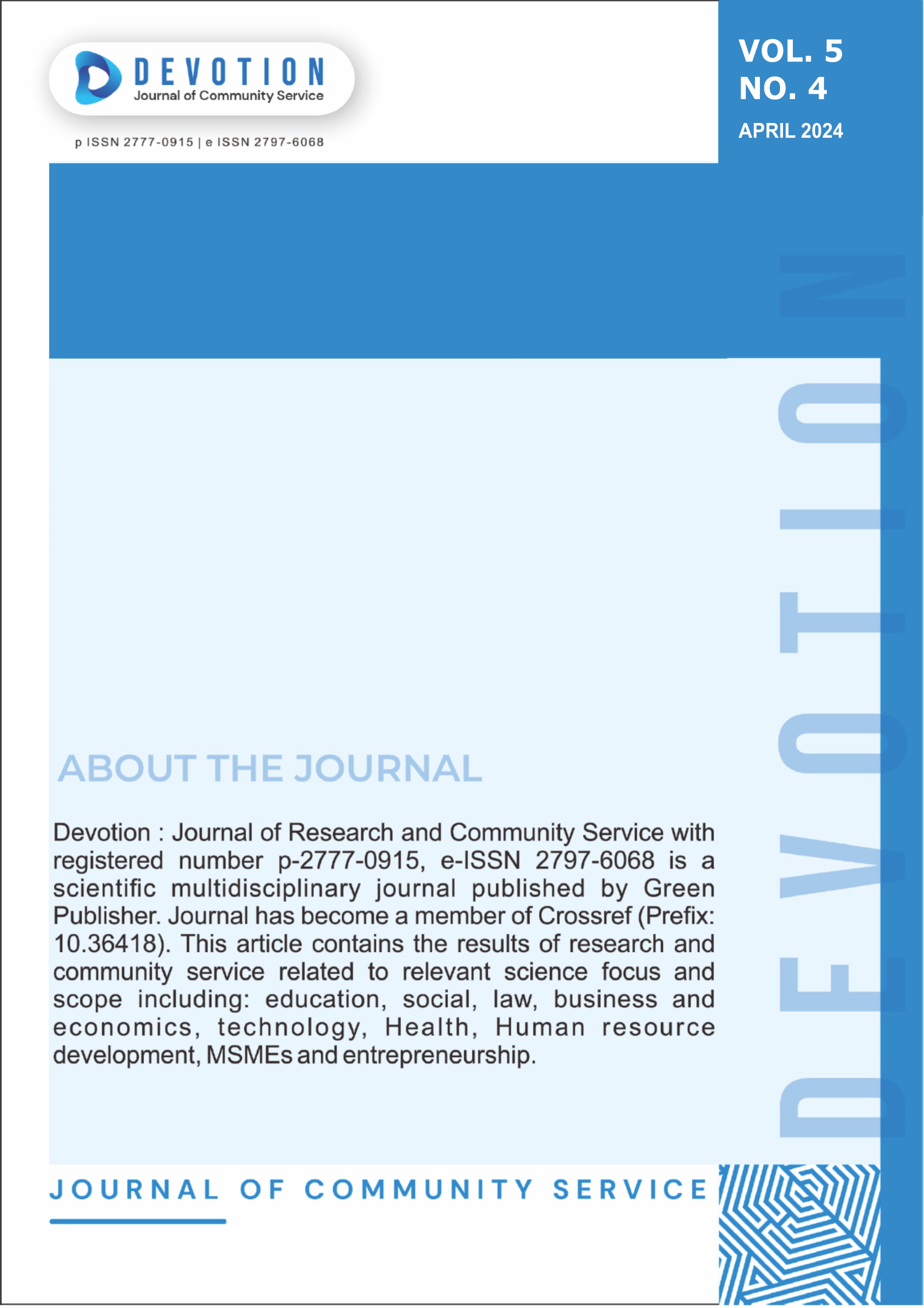Health Education Concerning Stroke Patients Treatment on Family's Readiness to Go Home for Non-Hemorragic Stroke Patients
DOI:
https://doi.org/10.59188/devotion.v5i4.721Keywords:
health education about care, family readiness to go home, non-hemorrhagic stroke patientsAbstract
Stroke has physical and mental impacts so that stroke clients depend on their families and need long-term care and recovery. Therefore, family readiness is needed in caring for stroke patients. Through health education using leaflets, we try to help patient family members be ready to care for stroke patients while at home. The research aims to determine the effect of health education on the readiness to return home to families of non-hemorrhagic stroke patients in the Inpatient Room at RSU PKU Muhammadiyah Delanggu. The research used a pre-experimental design method type one group pretest-posttest. The sample was taken by purposive sampling and obtained 32 respondents using the Slovin formula. The instrument uses leaflets and questionnaires. The data analysis technique uses a paired t test. It was found that the majority of families of stroke patients were female (65,6%), aged 46-55 years (37.5%), had a high school education (53.1%), did not work or were housewives (53,1% ), and the family caring for the child (62.5%), before being given health education using leaflets related to the care of non-hemorrhagic post-stroke patients, the majority of family members were less prepared (62.5%) and after being given health education, the majority of family members feel ready (87,5%). There is an influence of health education regarding the care of stroke patients on the readiness to return home to the families of non-hemorrhagic stroke patients in the Inpatient Room at RSU PKU Muhammadiyah Delanggu (p value 0.000 < 0,05).
Downloads
Published
Issue
Section
License
Copyright (c) 2024 Sri Handayani, Muhammad Hafidudin, Astrie Wulandari

This work is licensed under a Creative Commons Attribution-ShareAlike 4.0 International License.
Authors who publish with this journal agree to the following terms:
- Authors retain copyright and grant the journal right of first publication with the work simultaneously licensed under a Creative Commons Attribution-ShareAlike 4.0 International. that allows others to share the work with an acknowledgement of the work's authorship and initial publication in this journal.
- Authors are able to enter into separate, additional contractual arrangements for the non-exclusive distribution of the journal's published version of the work (e.g., post it to an institutional repository or publish it in a book), with an acknowledgement of its initial publication in this journal.
- Authors are permitted and encouraged to post their work online (e.g., in institutional repositories or on their website) prior to and during the submission process, as it can lead to productive exchanges, as well as earlier and greater citation of published work.













